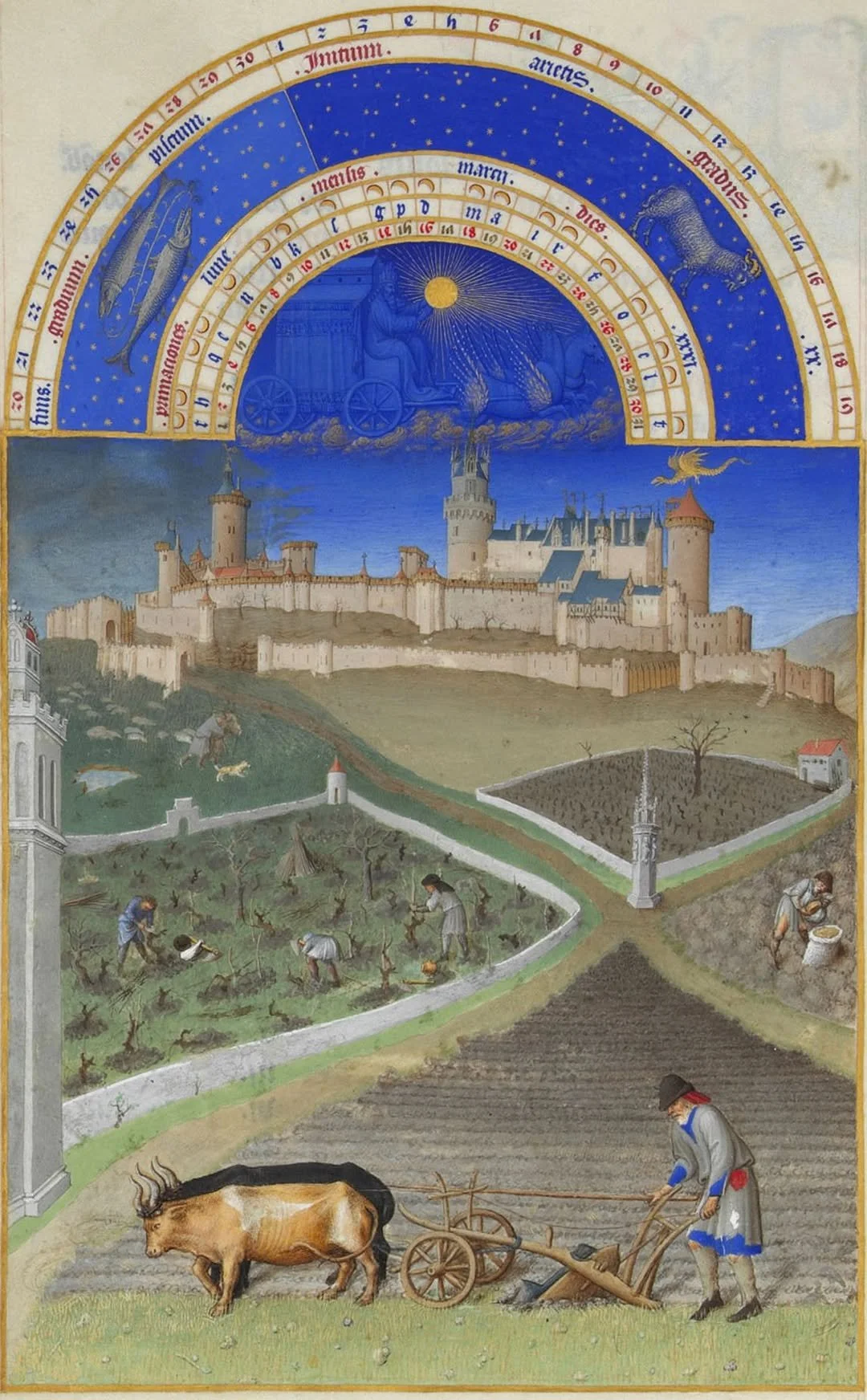Ancient Stronghold to Modern Community
From Ancient Stronghold to Modern Community
Nestled in the heart of the Vienne department in the Nouvelle-Aquitaine region of western France, the Commune of Lusignan holds a remarkable place in the historical, dynastic, and cultural heritage of France and Europe. Known primarily as the cradle of the House of Lusignan, this town has witnessed centuries of transformation—from its mythic beginnings and feudal power to a vibrant contemporary community.
II. Ancient and Mythical Origins
The origins of Lusignan are shrouded in both archaeological traces and rich medieval legend. Though little remains from the pre-Roman or early Gallic periods, the site likely saw continuous habitation due to its advantageous hilltop location above the Vonne River.
The town’s legendary founding is tied to the myth of Mélusine, a water faery and enchantress, said to have built the Château de Lusignan in a single night. This myth, dating from the 12th century, became the spiritual foundation of the Lusignan dynasty. Mélusine’s tale was emblematic of divine right, mystery, and noble lineage—associating the town with mythological grandeur.
III. The Rise of the Lusignan Dynasty (10th–14th centuries)
The real historical prominence of Lusignan begins in the 10th century with the emergence of a noble house that took its name from the town. The House of Lusignan rose to prominence in the High Middle Ages, playing key roles in the Crusades and ruling over territories far beyond France, including:
• The Kingdom of Jerusalem
• The Kingdom of Cyprus
• The Kingdom of Armenia-Cilicia
The Lusignans transformed the town into a fortified feudal stronghold, centered on the imposing Château de Lusignan, one of the most powerful castles in medieval France. It served as both a military bastion and a symbol of dynastic authority.
By the 12th and 13th centuries, Lusignan had become a strategic and cultural center, benefiting from the wealth and international influence of its ruling house.
IV. Royal Integration and Decline (14th–17th centuries)
With the extinction of the male Lusignan line in France and the absorption of their lands by the French Crown, Lusignan entered a new phase. The castle became a royal possession, frequently visited by French monarchs including Francis I and Charles IX.
Despite this prestige, the town’s importance gradually declined, particularly after the Wars of Religion and the eventual decay of its military relevance. The once-mighty castle fell into disrepair and was largely dismantled in the 18th century under Louis XV to make way for new constructions, including military barracks.
V. Revolutionary and Industrial Eras (18th–19th centuries)
The French Revolution marked a significant shift for Lusignan. Like many communes, its feudal heritage was dismantled in favor of republican structures. The local population shifted toward agriculture, small-scale trade, and crafts.
By the 19th century, Lusignan saw moderate industrial development. The introduction of the railway line between Poitiers and La Rochelle (with Lusignan as a stop) brought new economic opportunities, linking the commune to regional trade networks.
VI. World Wars and 20th-Century Recovery
Lusignan was not untouched by the upheavals of the 20th century. During both World Wars, the town endured occupation and conscription losses, with memorials attesting to the lives lost. However, it also benefited from post-war rebuilding and rural modernization projects initiated in the 1950s–70s.
Educational institutions, healthcare infrastructure, and civic buildings were gradually modernized, and the town adapted to the wave of decentralization in French administrative reforms.
VII. Modern Lusignan: Demographics, Culture, and Economy
Today, Lusignan is a peaceful commune of around 2,600 inhabitants (as of the 2021 census). While modest in size, it offers a rich cultural tapestry blending history, legend, and rural French charm.
1. Demographics
• Population: Approximately 2,600
• Age Structure: Balanced between older rural inhabitants and young families attracted by its quality of life
• Education: Several schools serve the area, and higher education institutions are accessible in nearby Poitiers
2. Culture and Heritage
Lusignan remains deeply tied to its mythical and medieval legacy. Key cultural sites include:
• The remnants of the Château de Lusignan: Though largely gone, its foundations and medieval outlines are preserved and interpreted.
• Église Notre-Dame-et-Saint-Junien: A fine example of Romanesque architecture.
• Mélusine-themed festivals and local storytelling: Celebrating the faery legend that defines Lusignan’s identity.
Local museums and associations work to preserve and share the Lusignan legacy with tourists and schoolchildren.
3. Economy
• Primary Sector: Agriculture remains central—particularly grain, livestock, and dairy farming.
• Secondary Sector: Light industry and artisan crafts are present but limited.
• Tertiary Sector: The largest employment source, including services, education, administration, and heritage tourism.
Tourism has become increasingly important thanks to Lusignan’s proximity to Poitiers and its medieval associations. Hikers, cyclists, and heritage travelers often pass through the commune.
Lusignan is more than just a commune—it is a bridge between myth and memory, legend and legacy. From the ethereal figure of Mélusine to the historical might of a crusader dynasty, Lusignan’s name has echoed far beyond its modest borders. Today, it quietly upholds this storied past, preserving its charm, welcoming modernity, and remaining an emblem of how small towns can shape the history of nations.
Sources and References
• Chevalier, Ulysse. Répertoire des Sources Historiques du Moyen Âge
• André Debord. La Société laïque dans les pays de la Charente du XIe au XIIIe siècle
• INSEE (Institut National de la Statistique et des Études Économiques) – Demographic Data
• French Ministry of Culture – Monuments Historiques database
• “Mélusine: Mythes et légendes” – Musée des Traditions Populaires de Lusignan



